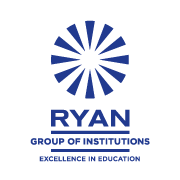Understanding Intersectionality
The concept of intersectionality as one of the Innovative teaching methods helps us grasp the interconnectedness and overlapping nature of categories, like race, class and gender. These categories significantly influence the experiences and identities of individuals or groups. Kimberlé Crenshaw coined this concept in 1989. It holds importance in education as it enables us to acknowledge the unique experiences shaped by diverse backgrounds and social classifications.In India, where society’s a blend of diverse cultures, religions and social strata understanding intersectionality becomes crucial. It allows educators to recognize the experiences and challenges faced by students enabling them to establish an fair learning environment.
Indian schools witness students hailing from backgrounds each carrying their distinct set of experiences, values and perspectives. Some students belong to well to do families while others come from backgrounds. Some may identify with the majority religion or caste while others are part of minority groups. Acknowledging these diverse identities serves as a step towards fostering inclusivity within the learning environment.
The Impact of Intersectionality on Learning Experiences
Intersectionality has a multifaceted impact on learning experiences. It shapes how students perceive themselves how they are perceived by others, around them as how they engage with the world.
Recognizing and understanding these identities is vital for educators as it enables them to tailor their teaching methods and strategies to meet the needs of their students. This understanding allows them to establish a learning environment where every student feels valued, respected and included.
The Role of Educators
Educators play a role in addressing intersectionality within schools. They must be mindful of their students diverse backgrounds. How these backgrounds influence their learning experiences. By being sensitive to the needs of each student educators can create an inclusive atmosphere for learning.
Additionally educators should encourage discussions about diversity and inclusion in the classroom providing students with opportunities to share their experiences and perspectives. This fosters a sense of belonging and mutual respect among students while cultivating an environment that’s positive and inclusive.
Recognizing intersectionality holds significance, within the education system as it allows for acknowledging and appreciating the diverse identities and experiences that students bring forth. This recognition empowers educators to build an equitable learning environment.
Promoting Inclusivity and Intersectional Learning Environments with Innovative teaching methods
Establishing Welcoming Educational Spaces
When it comes to creating inclusive learning environments educators rely on the principle of intersectionality. This approach helps them recognize and comprehend the intricate needs of students enabling the development of teaching strategies that’re adaptable and responsive. The presence of inclusive learning spaces is crucial as they ensure opportunities, for every student regardless of their identities to thrive, learn and succeed.
The Complexities of Student Identity
In India student identity is. Influenced by a blend of social and economic factors. This necessitates an approach to education that embraces nuances. Students bring with them a wealth of experiences, perspectives and aspirations shaped by their identities. Recognizing and valuing this diversity is vital in cultivating a sense of belonging while ensuring access to opportunities.
Intersectionality; Advancing Equity and Inclusion
Intersectionality acts as a tool for promoting equity and inclusion within institutions. It empowers educators to delve deeper into the intricacies of student identity by understanding how categories intersect, with each other and influence learning experiences.
By recognizing the challenges and opportunities that arise when aspects of a students identity intersect educators can develop targeted interventions and support systems to cater to each students specific needs.
For example a student who has abilities and comes from a marginalized community might encounter obstacles that require specialized assistance and resources. By understanding the complexity of this students identity educators can provide the accommodations and support to ensure their success and overall well being.
The Significance of Responsive Teaching
responsive teaching plays a vital role, in addressing intersectionality within education. It involves acknowledging the knowledge and experiences that students bring to the classroom integrating them into the teaching process. This approach not validates students identities and experiences. Also enriches the learning environment by incorporating diverse perspectives and knowledge.
In a country like India, where cultural diversity’s culturally responsive teaching holds particular importance. It enables educators to connect with students from backgrounds nurturing respect and understanding. By creating a learning environment that embraces diversity and celebrates individual identities educators empower students to embrace their uniqueness while contributing to the growth of the learning community.
Intersectionality serves as a tool, in establishing inclusive learning environments that cater to the needs of all students. Understanding the complexities of student identity and developing teaching strategies that promote equity and inclusivity form the basis of this framework.
Embracing Intersectionality; A Pathway, to Comprehensive Education
Celebrating Diversity, Cultivating Empathy in Classrooms
Intersectionality in education goes beyond recognizing diversity; it involves embracing it. It entails creating an inclusive classroom environment where every student is given a voice and their unique experiences are valued. In schools, where diversity’s the norm rather than an exception embracing intersectionality can lead to more comprehensive and enriching learning experiences.
By exploring the interconnected nature of categorizations students can develop a deeper understanding of identity complexities. This fosters. Mutual respect among students thus creating a learning environment. When students learn to appreciate experiences and perspectives it not enhances their learning but also equips them to be more compassionate and inclusive individuals in the future.
Intersectionality; Facilitating Personalized Learning
Intersectionality enables a customized approach, to education that tailors teaching strategies according to each students needs. By comprehending the challenges and opportunities associated with intersectional identities educators can adapt their teaching methods effectively ensuring that every student has equal opportunities to achieve their full potential.
Incorporating intersectionality in education is a pathway towards promoting fairness, inclusivity and comprehensive learning experiences. It enables educators to appreciate and respect the identities and experiences of their students fostering an environment where all individuals feel valued and included.
In the landscape of schools in India embracing intersectionality is not just essential but our responsibility. It signifies progress towards establishing an fair society where every person regardless of their social classifications can learn and develop. By integrating intersectionality into education practices we can ensure that this powerful tool is accessible to everyone thereby paving the way, for an equitable world.




